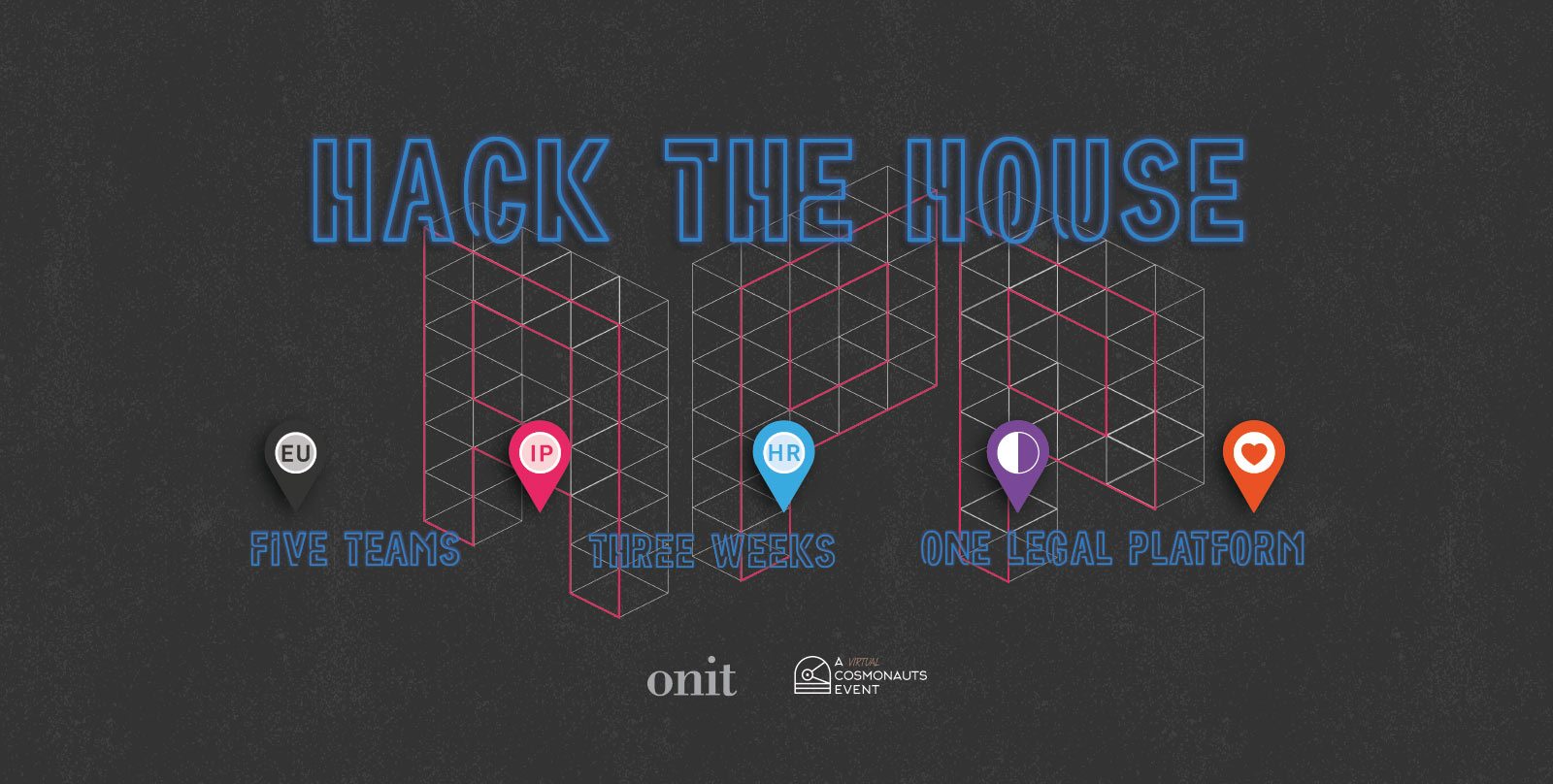
They came. They saw. They hacked. And now, Onit has a Hack the House winner!
In October, Onit launched its first hackathon – Hack the House. The friendly competition consisted of Onit customers, partners and staff seeing who can build the most useful and compelling workflow and collaboration solution using the Onit Apptitude platform.
Five teams accepted the Hack the House challenge. They include legal and business experts, certified App Builders and project managers. Within three weeks, each group identified a corporate legal department challenge, defined the requirements and built the solution from scratch using Apptitude.
Team Europe created the Data Breach Incident Reporting App to report a data breach in compliance with GDPR and other data privacy regulations. Many organizations currently use spreadsheets, phone calls, and emails – a highly manual process that is the perfect candidate for Apptitude automation. Their Hack the House App simplifies the process and helps meet expectations by regulators in Europe that reporting must happen within 72 hours from the point of breaches.
Team HR wanted to veer away from the traditional goal-setting and reviewing goals with a supervisor with their mentorship and career development App. Their Hack the House solution is a combination of several Apps for mentors, mentees and project opportunities. Users select areas of interest and then anyone across the company can find them and invite them to participate in special projects in their area of interest. Employees then gain more exposure throughout an organization to progress their careers.
Team IP focused on the trademark renewal decision process for Hack the House, one they identified as a challenge for any company that owns a significant number of trademarks worldwide. They combined Apps into a solution that streamlines the communication out to global teams, alerting them that it is time to make decisions about whether to renew trademarks or not. It gathers feedback on why decisions were made and automates the process for trademarks that will unquestionably be renewed. The team also built an additional App that tracks who in an organization has access to which trade secrets.
Team Diversity created an App to help law departments establish a baseline for diversity statistics and tracking. Using the App, a legal operations professional can gather a high-level view of a law firm’s diversity efforts, track historical progress and report on efforts. The App sends law firms a survey where they can upload their diversity stats and initiatives. They based the App on the ABA Model Diversity Survey to align with existing industry standards.
Team Pro Bono Program Management wanted to help pro bono leadership track, manage, recognize and report on time spent by attorneys and be able to thank each one for their volunteer efforts. Their Hack the House App centralizes requests and gives lawyers a space to collaborate with internal resources and third parties such as outside counsel on pro bono initiatives. Users can easily report out the work to different bar associations or internally. Best of all, it helps show appreciation for pro bono work in the form of automated document generation for thank you letters.
Judging Hack the House
The five judges found an impressive array of solutions to evaluate. The panel included:
- Maria Anassutzi, Lead IP Counsel EMEA, Canon Europe
- William Hayes, Senior Lawyer, BBC
- Mary Shirley, Head Of Culture Of Integrity And Compliance Education, FMCNA
- Jonathan Powers, Director Of Learning & Development, Onit
- Kristi Gedid, Senior Director, Global Legal Operations, Mylan
They judged based on a variety of criteria, including the ambition of the idea, how closely it fit with the original idea, the ease of use and the constructed App’s completeness. They also had a helping hand from hundreds of voters in the legal space.
“It was awesome to see the level of work and the thought that everybody put into their respective projects,” commented Mary Shirley, a judge and Head Of Culture Of Integrity And Compliance Education, FMCNA. “There is going to be a lot of real-world use for the Apps that have been produced. I had a fantastic time being a judge.”
“This hackathon made me feel empowered – not only as a judge but also as someone who works in and heads up legal teams,” said William Hayes, judge and Senior Lawyer at BBC. “I say empowered because I work with data scientists and technologists and developers, and often we are relying on them to try to get a solution developed. Seeing what the hackathon teams did with Apptitude, I feel like I can take my legal team now and say, ‘Hey, we’re going to do it ourselves.’ We can use these tools. We can use these ideas and create something ourselves. So it was empowering. I think that was something that I didn’t expect.”
After much deliberation and admiration for all the teams and their Apps, the judges selected the winner.
And the Winner Is …
TEAM IP!

Congratulations to Team IP and all the teams!
Thank you to everyone who participated in Hack the House.
Team EU
- Ed Rastelli, Standard Chartered Bank
- Lee Harrison, BT Group
- Robert Johnson, Onit
- Claire Banham, Onit
- Alyssa Kokilah, Cognia Law
- Tyler Reno, Onit
Team HR
- Curtis Batterton, McDonald’s
- Chris Hultgren, Deere and Company
- Weston Wicks, Morae Global
- Brett Baccus, Morae Global
- Dipish Parmar, Morae Global
- David Duffey, Onit
Team IP
- Matt Burdman, Colgate Palmolive
- Ken Capece, Colgate Palmolive
- Ed Kelly, Colgate Palmolive
- Nadine Stuttle, Duff and Phelps
- Rebecca Cotton, Duff and Phelps
- Atlantis Langowski, Onit
- Larry Gianneschi, Colgate Palmolive
- Josie Johnson, Onit
Team Diversity
- Eric Kabot, Royal Caribbean Cruises LTD.
- Michele Compasso, Corteva Agriscience
- Gregg McConnell, Corteva Agriscience
- Jesse Viani, Onit
- Sam Lu, Consilio
- Lisa Morris, Consilio
- Debby Young, Consilio
- Rhonda Oliver, Onit
Team Pro Bono
- Nick Panagoplos, Chubb
- Kim Takacs, Chubb
- Paige Edwards, Onit
- Massimo Penzo, Morae Global
Thank you also to Cosmonauts, who collaborated with Onit on Hack the House.










